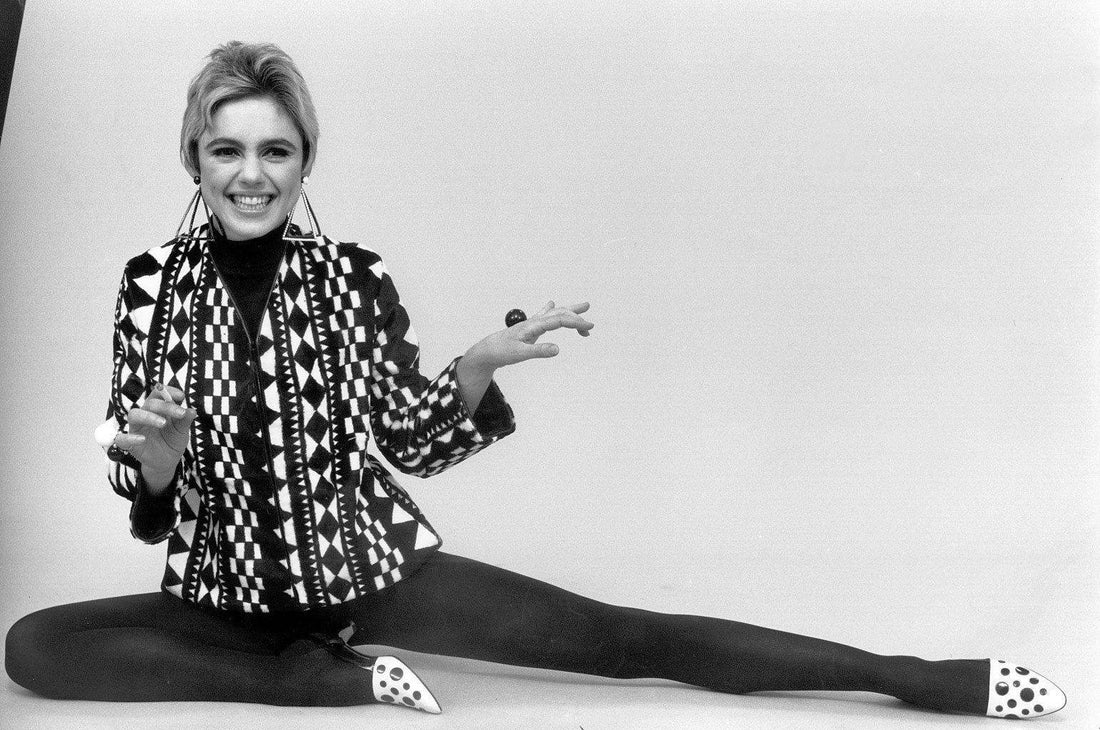Edith Minturn Sedgwick Post was born in Santa Barbara in 1943 to a prominent American family. She was named after her great aunt, a Gilded Age socialite who was famously painted by John Singer Sargent in 1897 (below). The painting is now at the Met museum.

Edie had a very strict and isolated upbringing and an abusive father. She developed an eating disorder at a young age. She was committed to psychiatric institutions in Connecticut and New York in 1962.

In 1963, she began studying sculpture. She lost two of her brothers within 18 months of each other in ’64 and ’65, which she was deeply affected by. On her 21st birthday she received a trust fund from her grandmother and moved to New York to pursue modelling.

She met Andy Warhol at Tennessee Williams’ birthday party in 1965 and subsequently started visiting his Factory. He gave her cameo roles in a few of his movies. When she proved popular, he gave her starring roles in Poor Little Rich Girl, Kitchen and Beauty No.2.

Even though these films were underground art films, the mainstream media started reporting on Sedgwick and her personal style. Her distinct look included black leotards and tights, mini dresses, leopard print (particularly her signature coat), stripes, chandelier earrings, and heavy eye makeup. She purchased children’s skirts and wore them as her own. She cut her hair short and sprayed it silver to match Warhol’s. She became his ‘Superstar’, which was the origin of the word in pop culture.

She was the ‘girl of the year’ in 1965 and dubbed an ‘It Girl’ and ‘Youthquaker’ after being cast in a Vogue article by Diana Vreeland. Edie epitomized the boyish Mod silhouette of the 60s and was the originator of the ‘no-pants’ look, which Lady Gaga ran with in the late 2000s and early 2010s.

She and Warhol made several more films together in 1965 but their relationship had deteriorated by the end of that year, after which she began living at the Chelsea Hotel. She became close with Bob Dylan at this time and as the story goes, he lead her on with a promise of starring in a film with him while secretly marrying his girlfriend behind Edie’s back. Edie’s brother claimed that Edie had been pregnant with Dylan’s child. She then began a troubled relationship with Dylan’s friend Bob Neuwirth, during which time, she became dependent on barbiturates.

In 1966, Women’s Wear Daily named her a fashion revolutionary amongst such notables as Mary Quant and André Courrèges.

She attempted to forge a legitimate acting career, auditioning for a Norman Mailer play but he turned her down.
Twiggy came to the U.S. in March 1967. Edie told WWD that Twiggy had copied her look two years earlier. That same month, Edie started filming the semi-autobiographical film ‘Ciao! Manhattan’. Betsey Johnson (for Paraphernalia) designed all the clothing Edie wore in this film. During this time, she accidentally set her room on fire and was hospitalized with burns.

The film was halted as her health rapidly deteriorated from drug use. She returned to California to recuperate and was sent to another psychiatric facility in 1969 and 1970. During this time, she met fellow patient Michael Brett Post, whom she would marry in 1971.

Determined to finish Ciao! Manhattan, she began filming again in 1970 and recorded audio tapes.
She relapsed and started using drugs again in late 1971 after her wedding. After a party, she took medication that had been prescribed to her for a physical illness and fell asleep beside her husband. She died that night from barbiturate intoxication at the age of 28.
Ciao! Manhattan was released in February 1972.

Edie was the inspiration for a number of songs by Bob Dylan including his hit ‘Like a Rolling Stone’. She also inspired songs by The Velvet Underground, Primal Scream, The Cult, The Pretty Reckless and Beach House. Lady Gaga’s music videos for Applause and Marry the Night include references to Edie and Ciao! Manhattan.
She was portrayed by Jennifer Rubin in the 1991 film The Doors.

Sienna Miller iconically portrayed her in the controversial 2006 film Factory Girl, which depicted Warhol and Dylan as having lead Edie to her death. The film's costume designer was John A. Dunn, who also did the costumes for the 2007 Bob Dylan biopic I'm Not There. Dunn recreated many of Edie's most iconic looks for the film. Factory Girl inspired a resurgence in 1960s fashion amongst youth in the mid to late 2000s.


She is the definitive 60s It Girl.

Check out our 1960s WOMENSWEAR collection to put together your own Edie inspired outfit!
